On the morning of July 1st, 1931, the first golden rays of sunlight lit up a then-nameless peak at the northern end of Sulphur Mountain. On top of the peak sat a small meteorological observatory building – still there today, and gathered atop the rocks below it were dozens of people enjoying the views over the Bow Valley below.
N.B. Sanson had been up to the observatory on this peak many times before – he blazed the trail up, and was the meteorologist instrumental in it being built there in the first place. For thirty years he had, as part of his duties, made the ascent up to the station every two weeks – but had often chosen to do so even more frequently than that. This particular sunrise though was a special one, as the reason so many friends had joined him for a sunrise breakfast and to present him with a bronze medal was that this was his 1000th accent.
The peak, now Sanson Peak (sometimes Sanson’s Peak), was named so in his honour one year before his death in 1949. One of his last known ascents was in 1945, at the age of 84. In the years since since first ascent in 1897, a lot has changed. In 1940 tea house was built on a neighbouring peak, and the area quickly become very popular with tourists as the go-to view of Banff and the Bow Valley. A gondola (Canada’s first) was constructed in 1959 to that same peak. A wooden boardwalk was built in the 70s and improved in the decades since, allowing the droves of tourists to roam the top of the mountain and visit neighbouring Sanson Peak without damaging the alpine vegetation.
You can’t find much solitude on Sanson Peak today. The gondola has a 650 person per hour capacity each way, and the hiking trail is one of Banff’s busiest. During the middle of the day in the summer your chances of having room in the parking lot are low, so bussing there is a necessity. That said, the views of Banff are iconic, and whether you hike up or take the gondola, they’re not to be missed.
Continue reading this blog post for everything you need to know to experience the Sanson Peak hike in Banff for yourself, including distance, elevation gain, how to get there, the best time to visit, and lots of photos of my experience.
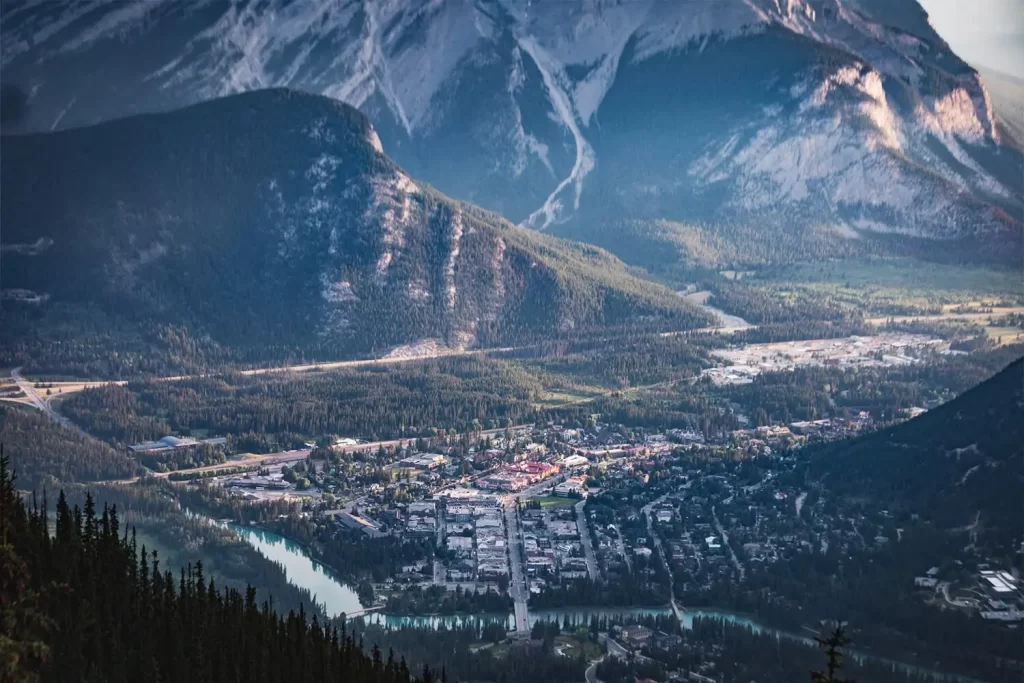
Note: The Sanson Peak hike is located in Banff National Park, meaning that a valid park pass is required. Day passes can be purchased at the park gates and are per day per person, but if you’re staying a week or longer, it’s more cost-effective to just buy an annual pass instead.
Before visiting Banff National Park it’s essential to read up on the Parks Canada rules that must be followed to avoid tickets and/or fines. When hiking it’s important to avoid harmful practices such as disturbing plants or rock-stacking, or removing any natural object from flowers to rocks, as it’s important to leave the environment as natural as possible for the animals and for fellow hikers to enjoy in perpetuity. As many flowers as there are, there are few enough that if we all took one, then there wouldn’t be any left. If you’re after a souvenir to take home with you, there are tons of gift shops in the Banff townsite to check out. Otherwise take only photos, leave only footprints.
If you haven’t heard of Leave No Trace principles, they’re also really essential to read up on before heading anywhere into the outdoors in general. Following these important principles basically means doing your best to leave beautiful places like Sanson Peak as good (if not better) than you found them, both for their preservation and for the enjoyment of other visitors.
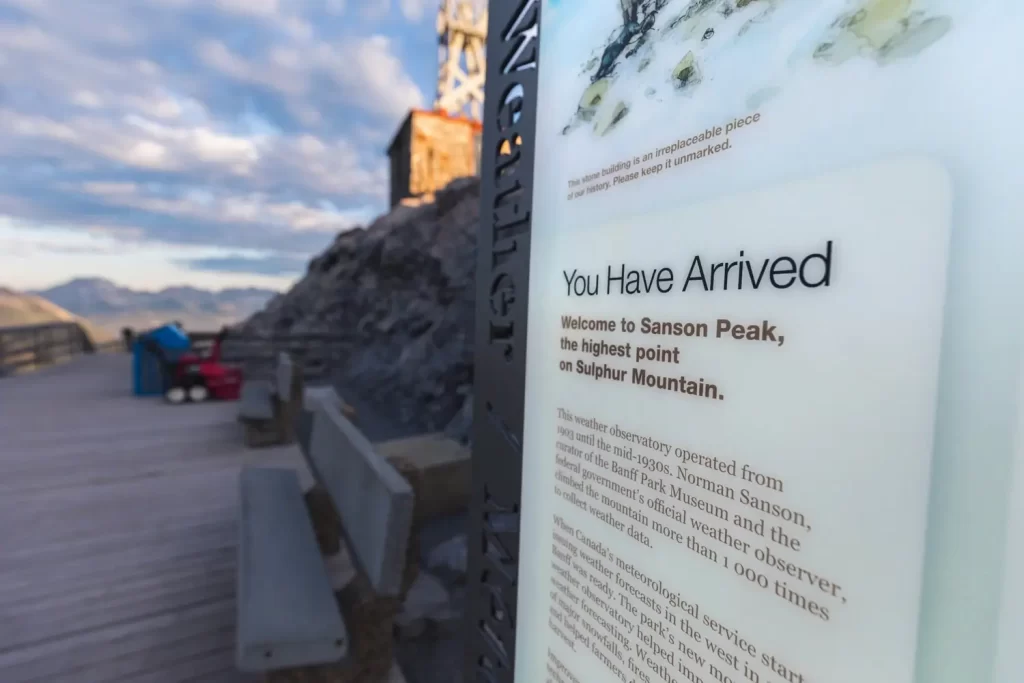
What’s the Difference Between Sanson Peak and Sulphur Mountain?
The trail up Sulphur Mountain to the gondola station and Sanson Peak is usually referred to as the Sulphur Mountain trail, however neither of those two points it reaches is the actual summit of Sulphur Mountain. This is contrary to official signage incorrectly stating that Sanson Peak is the highest point on the mountain. You only need to look at the top photo of this blog post however to see a higher summit rising up around 180 m above Sanson Peak to the south! Traversing to the official Sulphur Mountain summit is doable, but is a more challenging hike than this one.
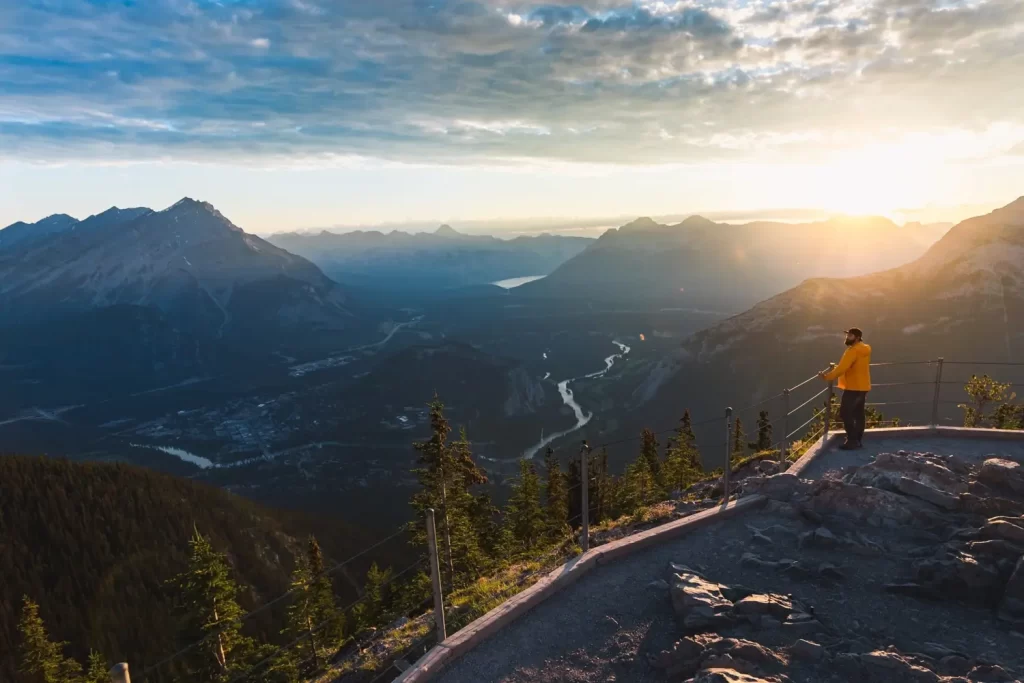
Sanson Peak Round Trip Details
Distance: 11.5 KM / 7.1 MI
Elevation Gain: 773 M / 2536 FT
Hiking Time: 4 HRS
Hiking & Safety Tips
- Prepare for the possibility of wildlife encounters. Bear spray is a must whenever travelling in bear country, as well as learning how to use it. Though your chance of an aggressive bear encounter is low, it is always better to be prepared with bear spray. Bear bells are proven to be an ineffective bear deterrent, and are actively discouraged by Parks Canada. The best way to let bears know you’re around is simply to use your voice. Make sure to keep a respectful distance from wildlife and never feed the animals. It may seem kind but it doesn’t just kill wildlife and put people in danger, it’s also in many cases illegal.
- Research current trail conditions and make sure you are well-informed about the route before you leave, and assess if it is within your capability. Be aware of what time it gets dark and check the weather forecast. Make sure to tell someone where you’re going and when you expect to return. Every year as more and more people try hiking for the first time, the number of rescues goes up. Being prepared is the best defense.
- Pack everything you need for a successful hike, including enough water and energy-rich snacks. Remember to pack out everything you pack in though – don’t expect to find a convenient garbage can halfway up the trail. Bring appropriate layers (remember you’ll warm up once you start hiking) and sun protection. Hiking poles may be helpful but are not required. In addition to not leaving any garbage on the trail yourself, I highly recommend bringing a garbage bag and collecting any trash that you do see on the trail. You’re guaranteed to make the hike up Sanson Peak a more enjoyable experience for the next person.

Hiking Sulphur Mountain in Winter
Yup, the hike up Sanson Peak is one of the more popular Banff winter hikes due to he low avalanche risk and well-packed non-technical trail. Ice spikes are a necessity though, and hiking poles are recommended too.
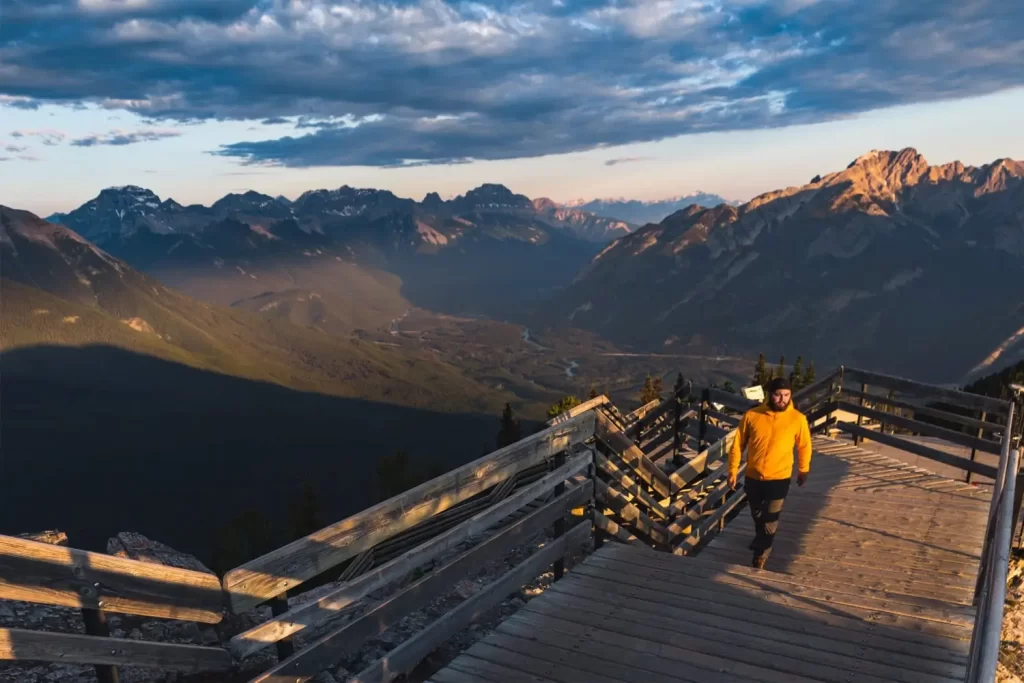
How to Get to Sanson Peak Trailhead
The hike up to Sanson Peak starts from the parking lot at Banff Upper Hot Springs, around a ten minute drive from the Banff townsite without traffic. Between people visiting the hot springs and doing the hike, the parking lot fills up pretty frequently during the middle of the day in summer so I suggest hiking early or late in the day to avoid the crowds, otherwise public transport to the trailhead is available. If you’d like to enjoy Sanson Peak without the hike by taking the gondola up, it’s just a half a kilometre walk and 25 m of elevation gain from the gondola station along the wooden boardwalk.
Click here to open the exact trailhead location in Google Maps.
Hiking Sanson Peak
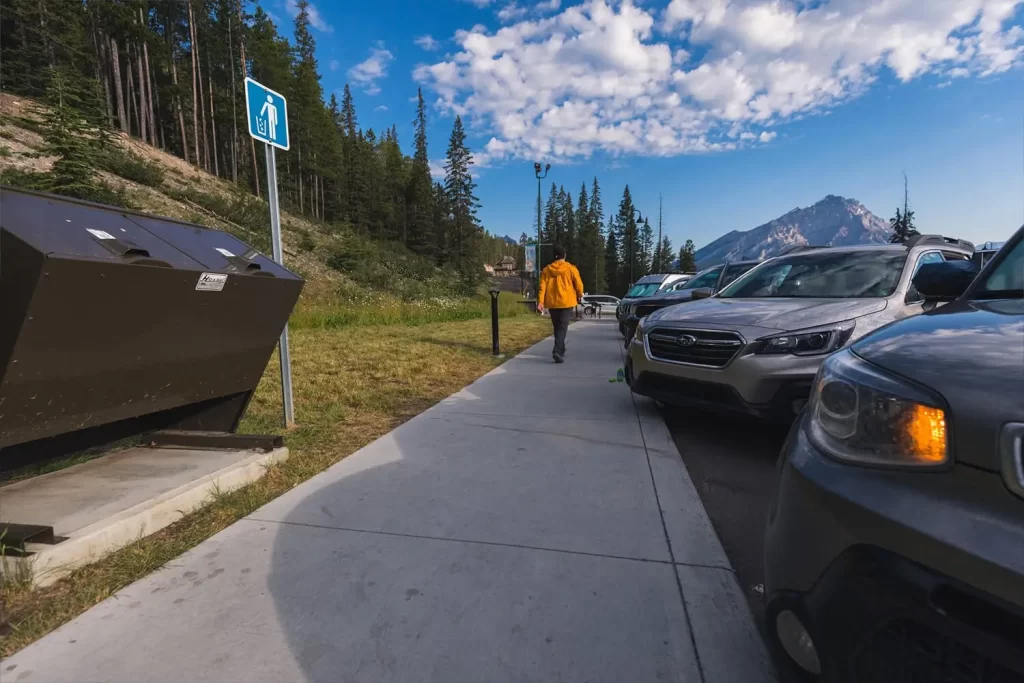
Heading back to the trailhead at the start of the parking lot.
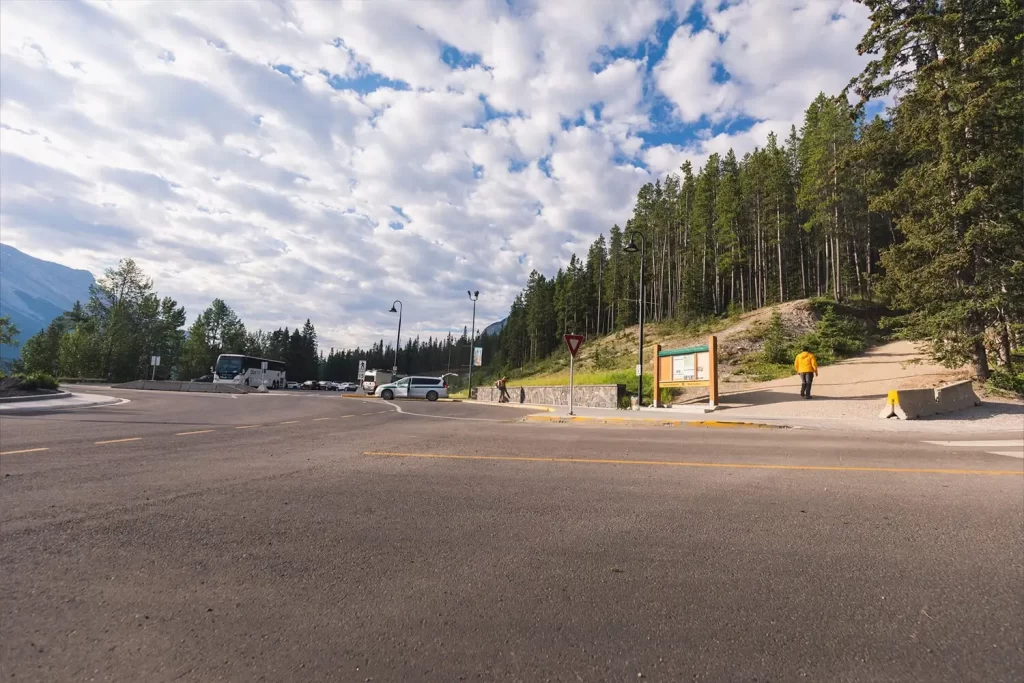
The trailhead is right next to the roundabout at the parking lot entrance.
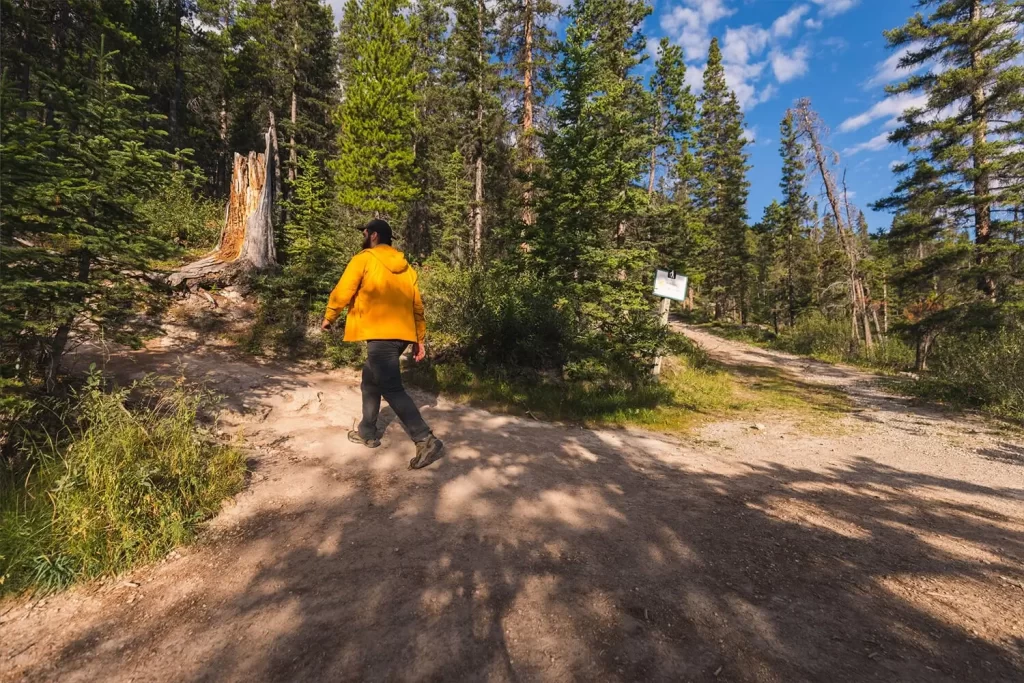
Heading up.
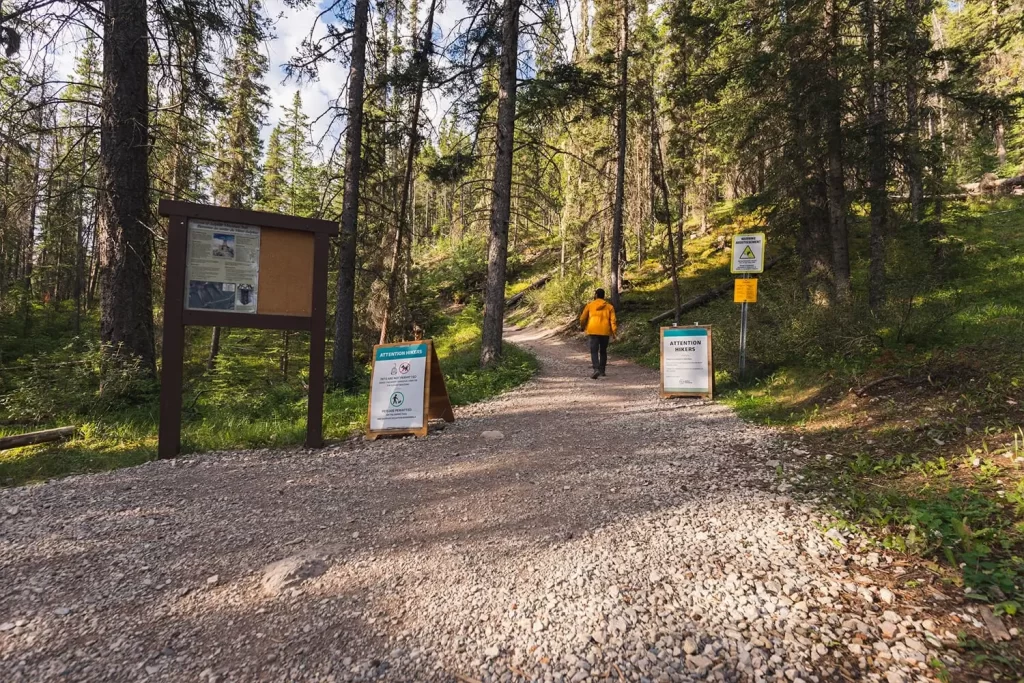
Plenty of reading material at the start of the hike.
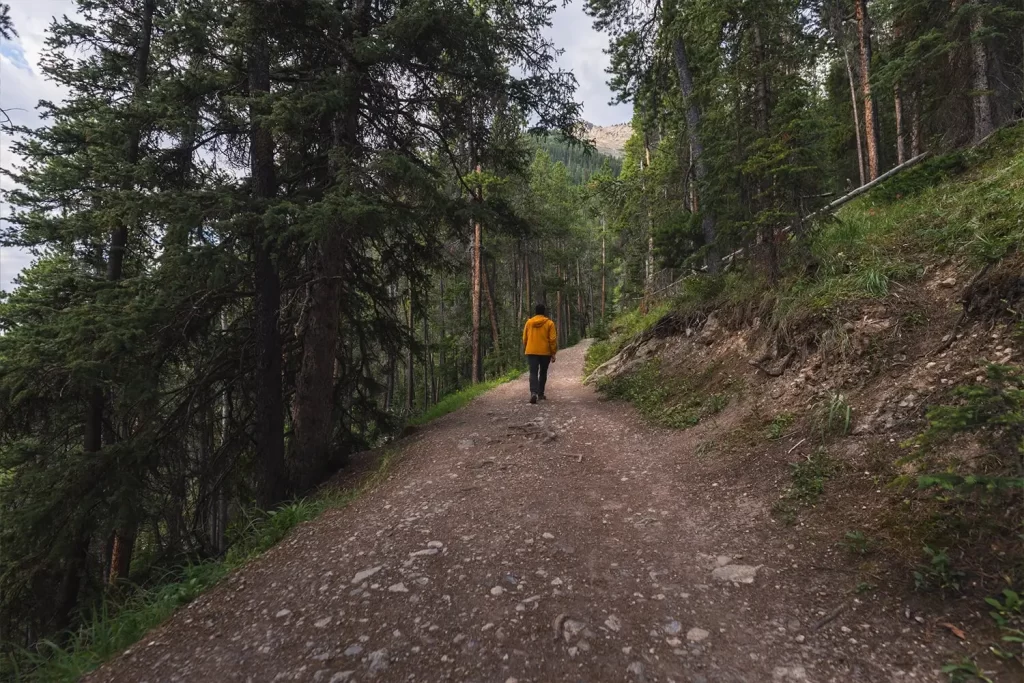
Most of the trail looks like this. Pleasant but not particularly scenic.
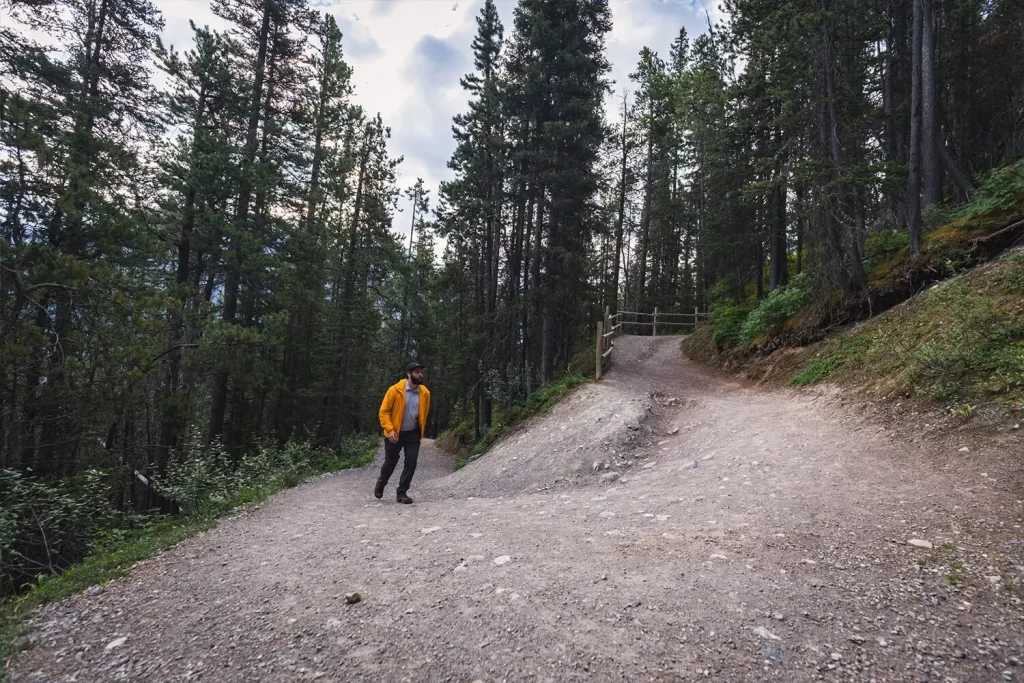
Oh yes, and there are switchbacks. Lots and lots of switchbacks. There are also a million shortcuts degrading the hill and trampling the plants. Don’t do that. Stay on the trail.
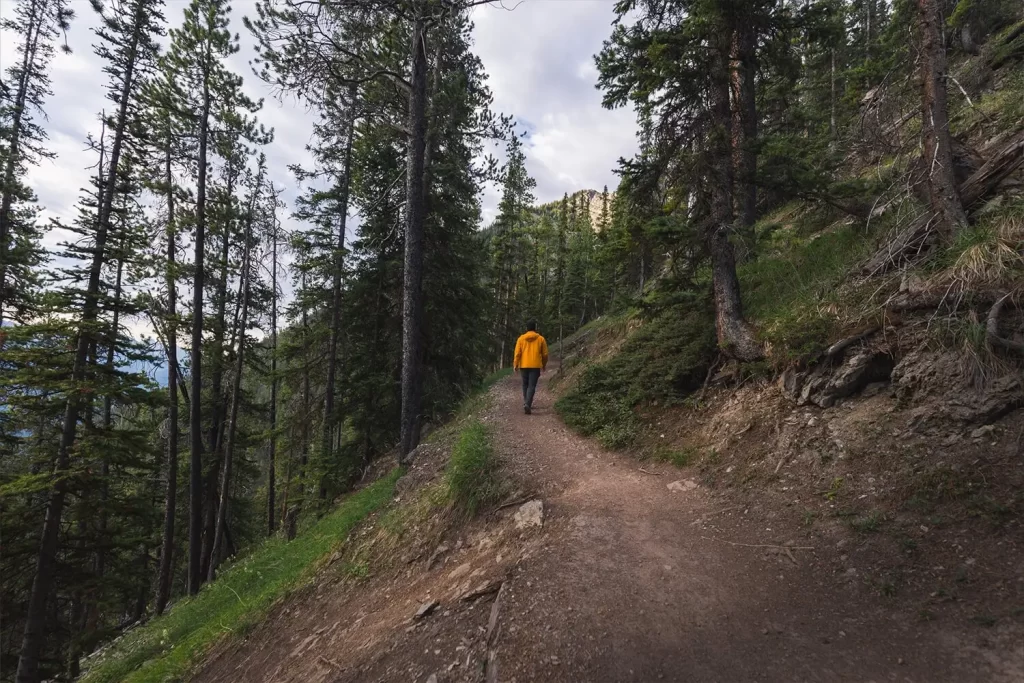
A glimpse of rocky mountain peak not far ahead provides a second wind.
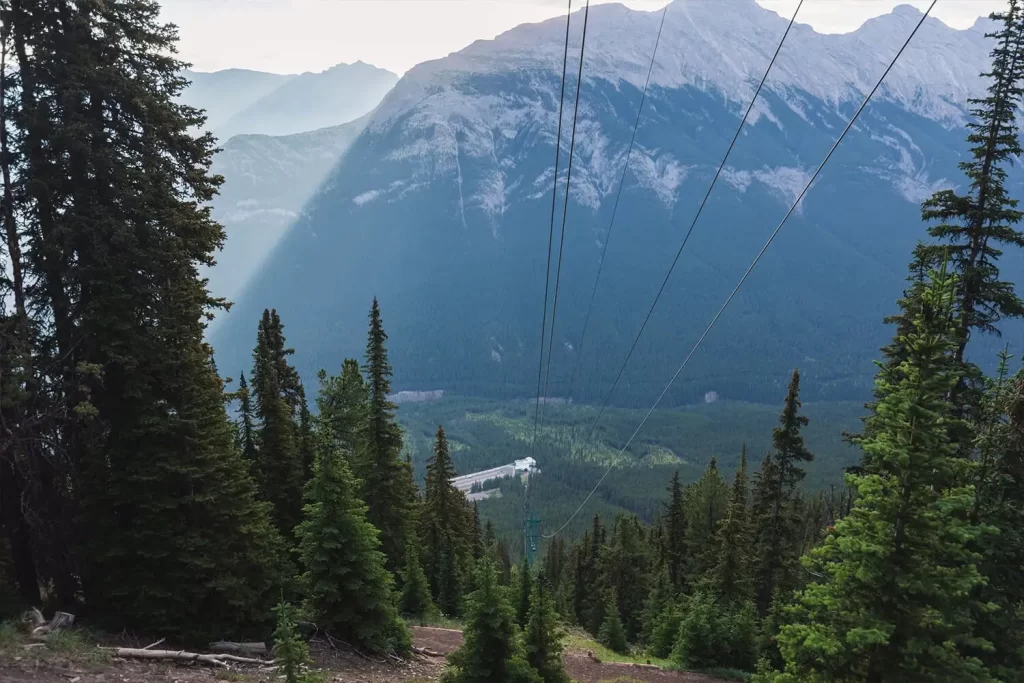
Views down to the gondola station way below.
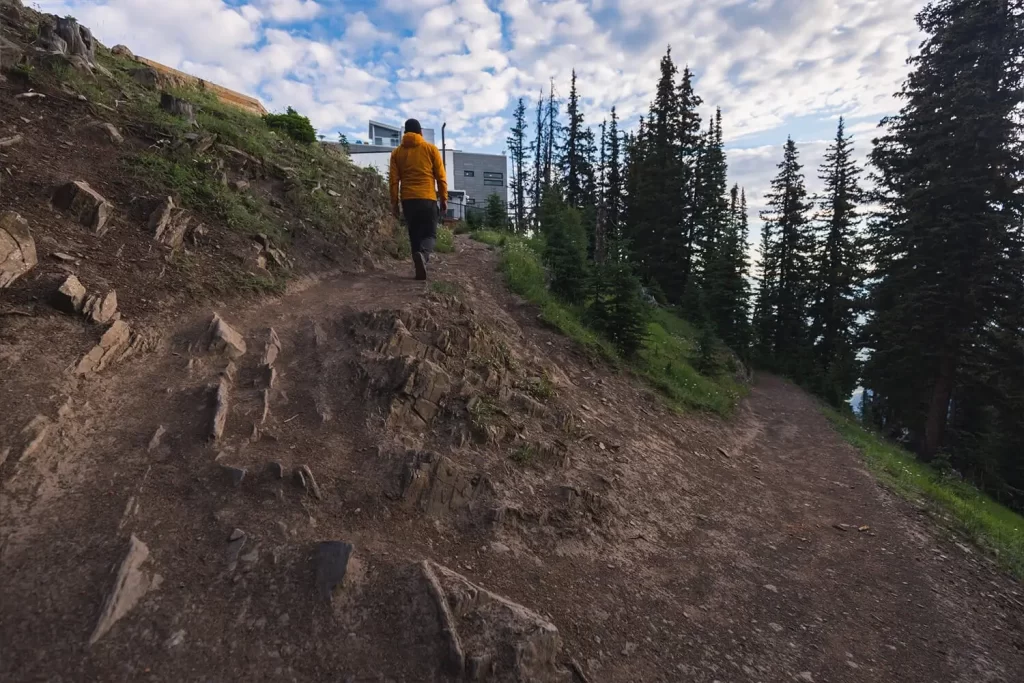
The final switchback.

Circling around the gondola station. Sanson Peak and the small building on top visible ahead.

Views down over Banff.
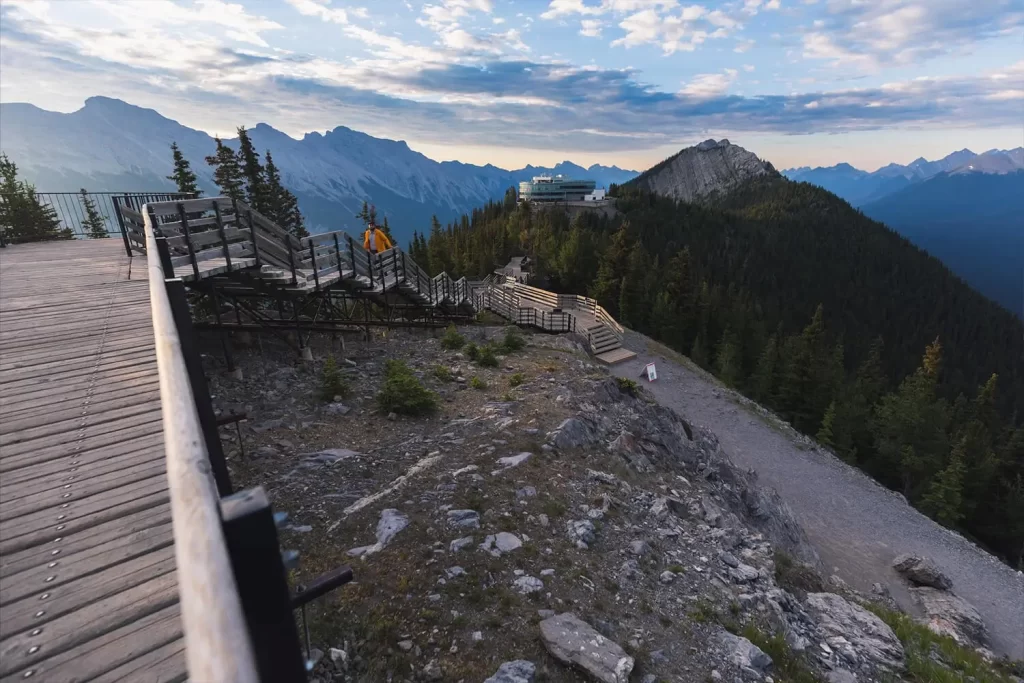
Walking up along the boardwalk with the gondola behind, and higher peaks of Sulphur further south.
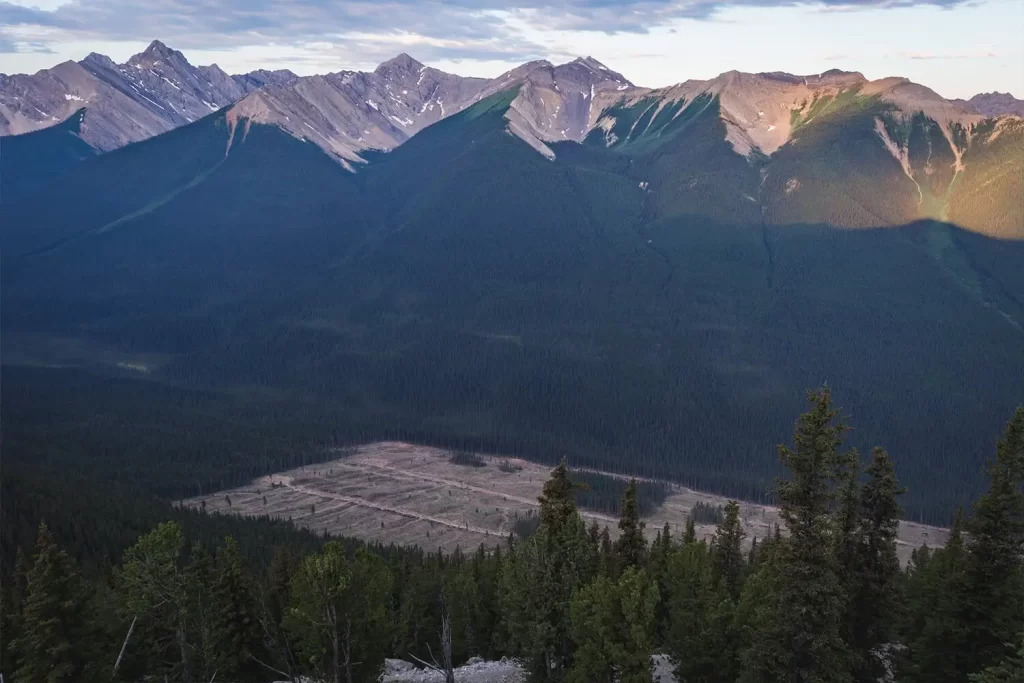
This area on the west side of Sulphur was logged a couple years ago as a fireguard.
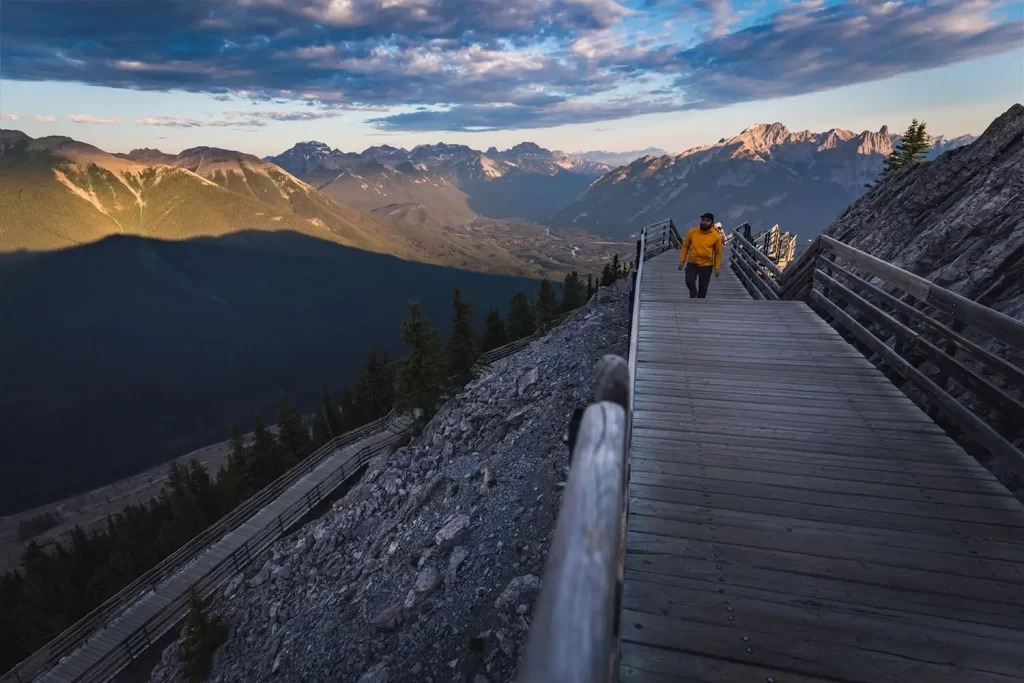
Views up the Bow Valley.

Views over Banff. Lake Minnewanka in the distance.
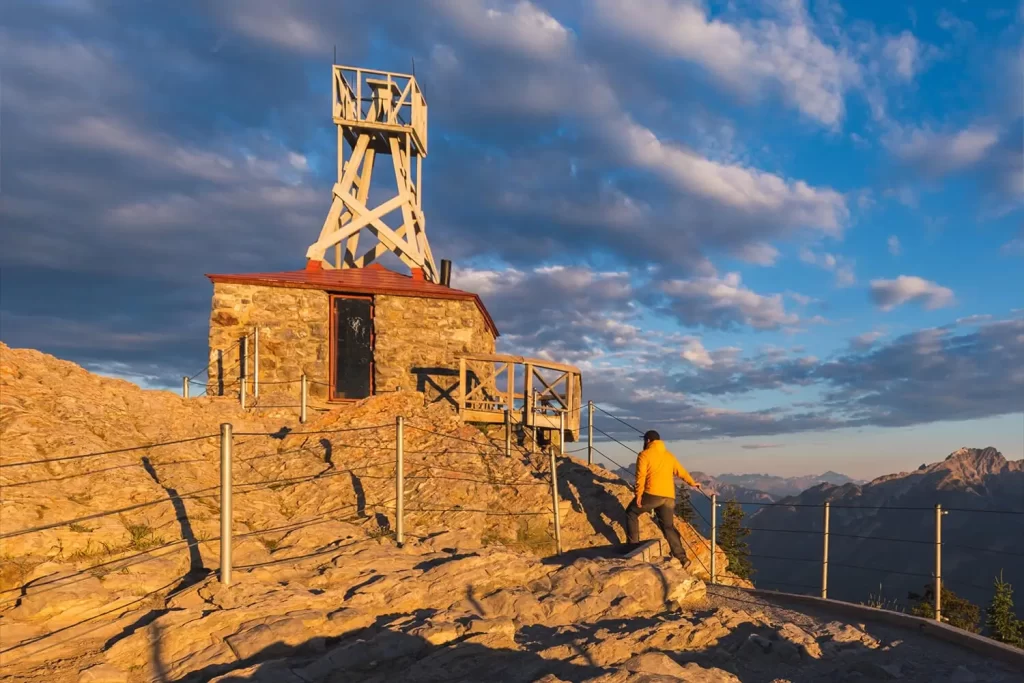
The small meteorological observatory on the peak.
Recommended Hiking Gear



Water is a must whenever I’m hiking, especially if the sun is going to be out. My favourite water filter I’ve used is the Katadyn BeFree 0.6L, which unlike other water filters I’ve used packs up really small and lightweight. For hikes where I know there won’t be any readily available water sources along the way, I make sure to bring my own. The Hydrapak Stow 1L bottle is my go-to, for the same reason that it’s made of a soft plastic that folds up and doesn’t take up any more extra space than necessary in my pack. Finally, Aquatabs are another great option for purifying water, with one tablet being suitable for one litre of water. I previously used the Grayl water filter while travelling internationally, and though I found its hard body more convenient for day to day use and easier to drink from, it has a little too much bulk for my fast-and-light style of hiking.



The secret to all my photos of gorgeous sunset and sunrise mountaintop views? A lot of hiking in the dark. And let me speak from personal experience when I say that the last thing that you want to happen when hiking is to be caught in the dark without a headlamp. I used the Black Diamond Spot 400 for years and it worked great – until I lost it on top of a mountain somewhere. The only downside to it was having to worry about the batteries dying, though there’s also a slightly more expensive version that has a rechargeable battery. Nowadays I’m using the Petzl Actik Core, which is a bit pricier than the more budget-friendly Black Diamond, but is also brighter, more comfortable (in my opinion), and has a hybrid power system that is rechargeable but can also take AAA batteries if needed.
You won’t see me using trekking poles on shorter hikes often – but on long hikes and backpacking trips, as well as certain scrambles, they are an absolute lifesaver. I’ve invested in a high quality ultra-lightweight pair of MSR DynaLock Ascent carbon poles which, while pricey, I don’t regret one bit. If you’re not entirely sure how much use you’re going to get out of a pair of trekking poles, the best budget-friendly option would be the Trekology Trek Z 2.0. Amazon does sell a lot of cheaper Made in China-style trekking poles for cheaper, but these usually are much much heavier and not worth buying.
All the best and most long-lasting cables and power banks I’ve ever owned have been Anker. I once had a phone cable from them that lasted me over three years of daily use! That’s why I keep an Anker PowerCore Essential 20K power bank on me. Like many people I use my phone for a lot of stuff when hiking (checking in with family, using online maps, taking photos, flying my drone) so I like to be prepared for that low battery warning by having a backup power source on me just in case.



The only socks I ever buy for myself are from Darn Tough, and I almost always make sure to wear them when hiking. After years of having no problems only wearing these comfortable and rugged socks for hikes, I accidentally wore a pair of no-name socks on a hike last year and ended up with blisters on both feet. Safe to say I’m back to sticking with the Darn Tough. And the best part? They have a lifetime guarantee, meaning that if they ever wear out you can send them back for a brand new pair. For hiking footwear I go between a pair of lightweight approach shoes for quick and dirty mountain ascents or anything involving scrambling and more heavy-duty boots for longer treks. I’ve worn a couple different versions of the lightweight but super durable Arc’teryx Konseal FL 2 approach shoes for a few years now and am very impressed with the durability. I also really like the thick toecap that keeps me protected every time I stumble into a root or large rock. For longer, tougher, or muddier treks I rely on my LOWA Camino EVO GTX, which I find insanely comfortable and made of very high quality.



I wear my Ar’teryx Gamma Lightweight Pants on every single hike I go on, and on many days when I’m not hiking. After several years of abuse they are still holding together extraordinarily well, with only a few small holes from where I’ve fallen down and some slight stains from being repeatedly coated with mud. They’re lightweight, breathable, and super comfortable. For lightweight and breathable hiking tops I’m a big fan of both the Patagonia Capilene Shirt and the MEC Core Shirt. My Arc’teryx Squamish Hoody shows up in a lot of my photos. It’s super lightweight and packable, and does a great job of cutting the wind while also being pretty breathable. I also have an Arc’teryx Atom Hoody and Arc’teryx Beta LT that I pull out for cooler or wetter conditions.
I hope you enjoyed this guide to hiking Sanson Peak in Banff National Park! Feel free to leave any questions in the comment section below or to contact me directly via social media.
